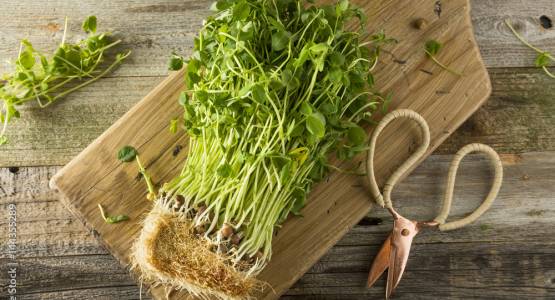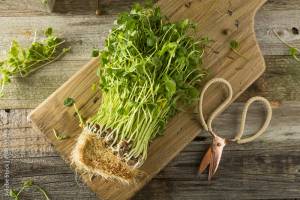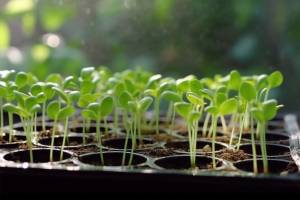Growing Pea Shoots: The Ultimate Guide


If you’re looking for a simple and rewarding addition to your garden, pea shoots might just be the perfect choice. They are not only easy to grow but also packed with nutrients, adding a fresh and vibrant flavour to your dishes. This Growing Pea Shoots: The Ultimate Guide will walk you through everything you need to know about growing pea shoots in the UK, from selecting the right varieties to planting, pest management, and harvesting.
Why Grow Pea Shoots?
Pea shoots are the young, tender top growth of pea plants, and they can be harvested just a few weeks after planting. They offer a crisp texture and a sweet, pea-like flavour, making them a versatile ingredient for salads, stir-fries, and garnishes. Nutritionally, they are rich in vitamins A, C, and K, as well as folic acid and fibre.
Choosing the Right Pea Varieties
While you can grow pea shoots from any pea variety, some are particularly well-suited for this purpose. Here are a few recommended types:
- Sugar Ann: This is a popular choice for pea shoots due to its tender and sweet flavour. It’s a dwarf variety, making it ideal for small spaces and container gardening.
- Oregon Sugar Pod: Known for its vigorous growth and large leaves, this variety provides a bountiful harvest of shoots.
- Green Arrow: This heirloom variety is not only good for producing shoots but also for harvesting mature peas later in the season.
- Dwarf Grey Sugar: This variety has attractive purple flowers and is renowned for its sweet and tender shoots.
- Mange Tout: While typically grown for its pods, Mange Tout also produces delicious shoots.
Propagating Pea Shoots
Propagating pea shoots is straightforward and can be done either indoors or outdoors, depending on the time of year and your growing conditions.
Indoors

- Prepare the Container: Choose a shallow container with good drainage. Fill it with a high-quality potting mix or a mixture of compost and soil.
- Sow the Seeds: Scatter the pea seeds evenly over the surface, aiming for a dense planting. Cover them with a thin layer of soil, about 1-2 cm deep.
- Water: Water the soil thoroughly, ensuring it is evenly moist but not waterlogged.
- Light and Temperature: Place the container in a bright spot, such as a windowsill, where it will receive plenty of light. Pea shoots prefer cooler temperatures, around 10-18°C.
- Maintenance: Keep the soil consistently moist by watering regularly. You should see shoots emerging within a week.
Outdoors
- Timing: In the UK, the best time to sow pea seeds outdoors is from March to June.
- Site Preparation: Choose a sunny location with well-drained soil. Improve the soil by incorporating compost or well-rotted manure.
- Sowing: Sow the seeds directly into the ground, spacing them about 2-3 cm apart in rows that are 15-20 cm apart. Cover with 1-2 cm of soil.
- Watering: Water well after planting and keep the soil moist until the seeds germinate.
- Thinning: Once the shoots are a few centimetres tall, thin them out if necessary, ensuring they have enough space to grow.
Planting the Peas Out
If you’ve started your pea shoots indoors, you’ll need to harden them off before transplanting them outdoors. Here’s how to do it:
- Gradual Acclimatisation: About a week before transplanting, start placing the seedlings outside for a few hours each day, gradually increasing their time outdoors. This helps them acclimate to the outdoor conditions.
- Transplanting: Choose a cloudy day or transplant in the evening to reduce transplant shock. Space the seedlings about 10 cm apart in prepared soil.
- Watering and Mulching: Water the seedlings well after planting and mulch around them to retain moisture and suppress weeds.
Common Pests and How to Manage Them
Pea shoots are relatively resilient, but they can still fall prey to common garden pests. Here are a few to watch out for:
- Aphids: These small, sap-sucking insects can weaken plants and spread diseases. Control them by spraying with a diluted soap solution or using insecticidal soap.
- Slugs and Snails: These pests can cause significant damage, especially to young shoots. Use slug pellets, create barriers with copper tape, or hand-pick them off your plants.
- Pea Moth: The larvae of this moth can tunnel into pea pods and shoots. Using fine netting or horticultural fleece to cover your plants can help prevent infestations.
- Birds: Birds can peck at the tender shoots. Protect your plants with netting or bird scarers.
- Powdery Mildew: This fungal disease can affect pea plants, especially in dry conditions. Improve air circulation around your plants and water at the base rather than from above to prevent it.
Harvesting Pea Shoots
One of the great advantages of growing pea shoots is how quickly you can enjoy the fruits of your labour. Here’s how to harvest them for the best flavour and texture:
- Timing: Pea shoots are ready to harvest about 2-4 weeks after planting, when they are 10-15 cm tall. The ideal time to harvest is when they have two or three sets of leaves.
- Method: Use sharp scissors or garden shears to cut the shoots just above the soil level or above a leaf node if you want to encourage regrowth. Harvest in the morning for the best flavour and to minimise wilting.
- Regrowth: If you leave the base of the shoots intact, many pea varieties will regrow, giving you multiple harvests from the same plants.
Enjoying Your Pea Shoots
Now that you’ve harvested your pea shoots, it’s time to enjoy them. Here are a few ideas for incorporating them into your meals:
- Salads: Add pea shoots to salads for a fresh, crisp texture and a burst of flavour.

Final Tips in our Ultimate Guide
Finally, in our Growing Pea Shoots: The Ultimate Guide, here are a few last tips to help you:
- Succession Planting: To ensure a continuous supply of pea shoots, sow new seeds every few weeks.
- Indoor Gardening: Pea shoots are perfect for indoor gardening, allowing you to grow fresh greens year-round.
- Organic Growing: If possible, use organic seeds and soil to grow your pea shoots, ensuring they are free from harmful chemicals.
Growing pea shoots is a delightful and easy way to add fresh, nutritious greens to your diet. Whether you have a large garden or just a small windowsill, you can enjoy the sweet, crisp taste of home-grown pea shoots in just a few weeks. We hope you have found our Growing Pea Shoots: The Ultimate Guide article helpful. Happy gardening!
